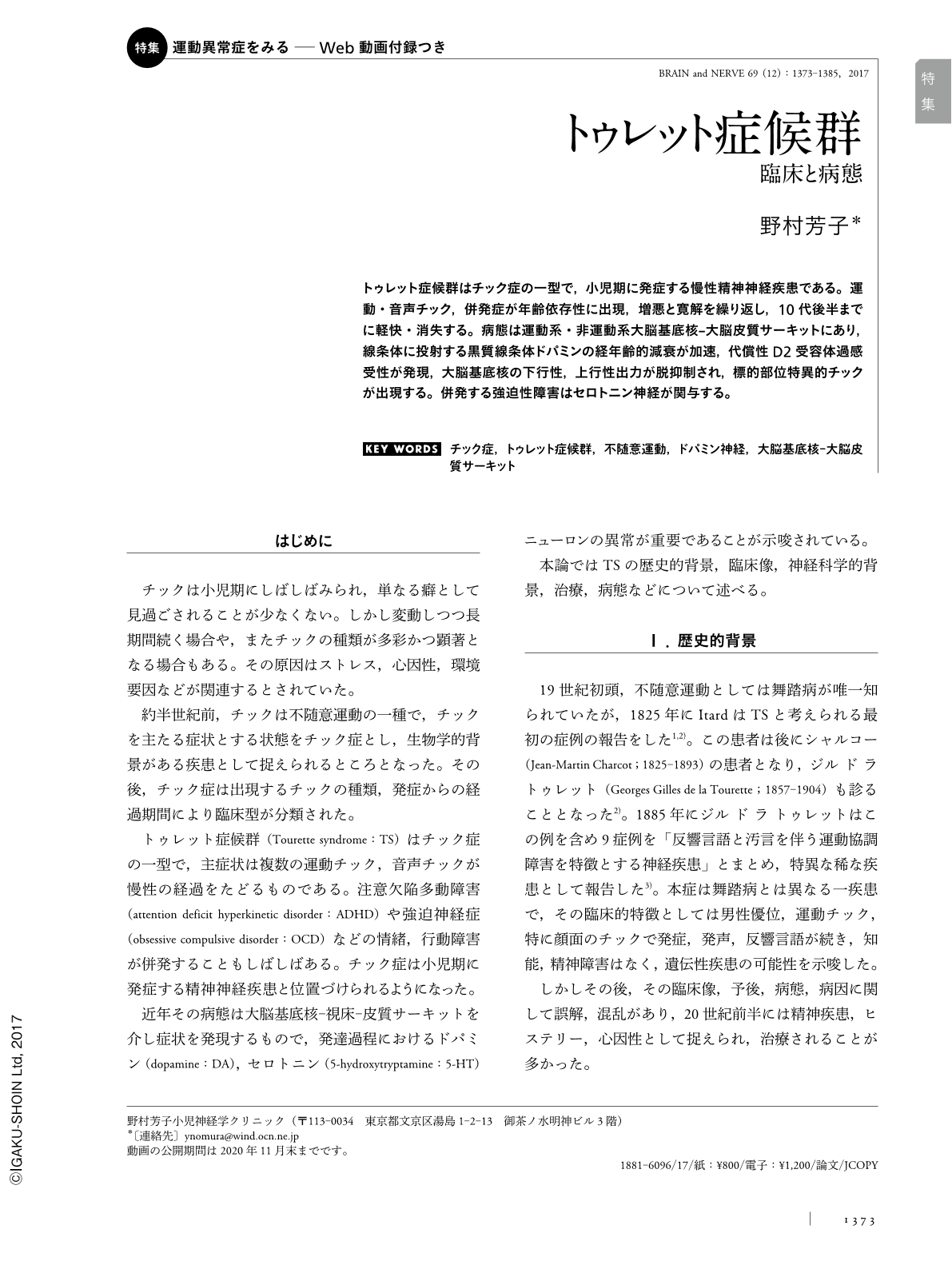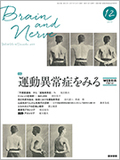Japanese
English
- 有料閲覧
- Abstract 文献概要
- 1ページ目 Look Inside
- 参考文献 Reference
トゥレット症候群はチック症の一型で,小児期に発症する慢性精神神経疾患である。運動・音声チック,併発症が年齢依存性に出現,増悪と寛解を繰り返し,10代後半までに軽快・消失する。病態は運動系・非運動系大脳基底核-大脳皮質サーキットにあり,線条体に投射する黒質線条体ドパミンの経年齢的減衰が加速,代償性D2受容体過感受性が発現,大脳基底核の下行性,上行性出力が脱抑制され,標的部位特異的チックが出現する。併発する強迫性障害はセロトニン神経が関与する。
*本論文中に掲載されている二次元コード部分をクリックすると,付録動画を視聴することができます(公開期間:2020年11月末まで)。
Abstract
Tourette syndrome (TS) is a neuropsychiatric disorder with the onset in childhood. TS is a form of tic disorders, and characterized by the motor and vocal tics, and comorbidities such as attention deficit hyperkinetic and obsessive compulsive disorders. These symptoms appear age dependently, showing a wax and wane course, and subside or abolish by the late teens. Pathophysiology of TS involves the dysfunction of both motor and non-motor basal ganglia-thalamo-cortical circuitries. The nigrostriatal dopamine (DA) system takes the exponential decrement at the striatum. In TS, this decrement is accelerated in association with DA-D2 receptor super-sensitivity, which disinhibits the descending and ascending output pathways of the basal ganglia. Disinhibited motor basal ganglia-thalamo-cortical circuitries develop the specific tics according to the target sites. Hypofunction of the 5-hydroxytriptophan (5-HT) neurons of the brainstem innervate the striatum involved in non-motor basal ganglia-thalamo-cortical circuitries and cause the obsessive compalsive disorder and other behavioral disorders. The associated DA-D2 receptor supersensitivity is assumed to be a consequence of the developmental abnormalities and not due to denervation supersensitivity. The treatments of TS aim to correct the 5-HT hypofunction by improving the environmental factors and super-sensitized DA receptors medically by a small dose of levodopa and/or aripiprazole.

Copyright © 2017, Igaku-Shoin Ltd. All rights reserved.


